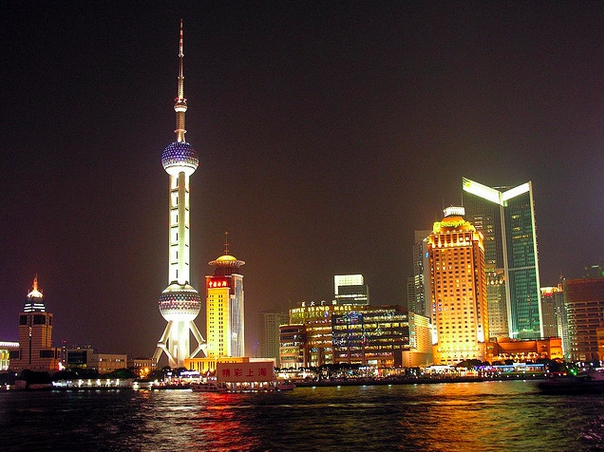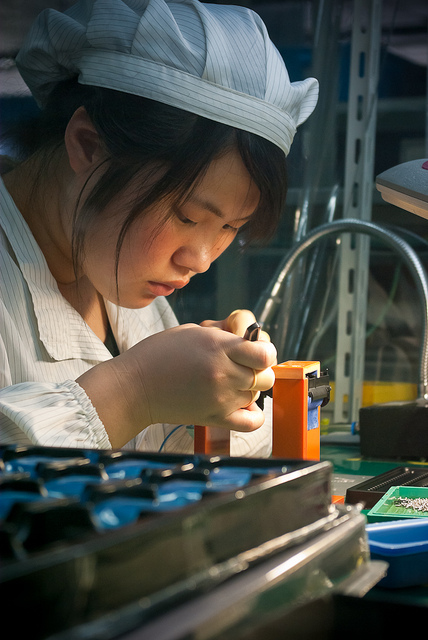Made in China 2025 released by Chinese State Council in early May this year, has established a guiding principle for China’s transformation from a “manufacturing giant” to a “manufacturing powerhouse” in next 10 years. Based on the “Industry 4.0” in Germany, this plan introduces the “three step” strategy. By taking 30 years, which is divided into 10 years of three, it aims to build China into a manufacturing powerhouse in the year 2045 when China celebrates its 100th anniversary.
Develop China from a manufacturing “giant”to a manufacturing “powerhouse”
9 strategic objectives are put forward in Made in China 2025, which include improve innovation ability, promote the integration of informatization and industrialization, establish high-quality brand, implement green manufacturing comprehensively and vigorously promote breakthroughs and development in key areas etc. And it also has 10 key areas covering information technology, energy conservation and new energy, aviation and navigation and biological medicine etc.
The central government will provide special funds and tax preferences for 10 key areas. Although the details are not released, it is believed that the whole planning will improve the influence of Chinese enterprises in global industries and enhance the ability of enterprises to meet the different needs of customers at the same time.
Industry 4.0 can be achieved directly by taking existing advantages
Made in China 2025 is released at this very time and it is of certain advantage for China from the perspective of development process. Compared with developed countries, China and other emerging markets are able to combine industrial systems with the Internet earlier and faster due to the fact that they have invested heavily on infrastructure. This would help emerging markets to promote efficiency and enter the stage of “Industry 4.0” directly by skipping the stage of “Industry 2.0” and “Industry 3.0” which developed countries have experienced. For example, emerging markets do not bother to install electrical cable and wire but use wireless technology directly. By strengthening the connection between enterprises, it will be able to improve the overall economic scale of enterprises and ease the constraints on resources and finance, which makes enterprises more efficient and “smart.”
However, there are still many challenges to cope with in the future in order to achieve the ambitions in Made in China 2025. Firstly, current innovation ability of China is still not high. Although China has 223,000 patent applications in 2014, which make it a country where the most patents are applied for four consecutive years, China is still highly dependent upon importing core materials. In addition, China’s spending on R & D is, all the time, only 2.0% GDP (2013). And it leads to the fact that the added value of the manufacturing industry is only 21.5%, which is far lower than 35% or more in other developed countries.
Innovation ability and image are to be improved
In addition, Chinese brand image has been very poor. There are nearly 10% products which do not conform to the standards within China, and the ratio of Chinese products which need to be recalled is as high as 65% abroad (2012), which is the largest in the world. As far as toys are concerned, on average there are 20 cases where Chinese manufactures are required to recall their toys every month in EU.
Environmental sustainability is also a challenge. Poorly efficient and irresponsible behavior of manufacturing industry in the past has caused heavy environmental pollution. Apart from fog, haze and heavily polluted underground water, utilization ratio of energy per unit is also very high. Therefore, it is not easy for China to achieve significant decrease in energy and material consumption and pollutant emissions so as to fully implement green manufacturing within 10 years.
Capital and talents need to cooperate
Huge capital expenditure could also become obstacles to the implementation of the planning. Although the central government will provide financial and tax preferences, the capital might be very few compared with the funds required in training, machinery and R & D. Talent supply might also be insufficient. Universities may also fail to provide appropriate training facilities. In addition, during the past 30 years, China has been introducing technology and management structure from abroad by taking advantage of its low cost, which results in weak investment and strength in R & D. Furthermore, China has been depending on and developing resource intensive industry such as steel, aluminum, cement etc. It then results in the fact that technology intensive industries such as solar and wind energy industry are underdeveloped. Therefore, the key lies in how to transform the industrial structure and capacity.
China also faces restrictions in order to expand the market. Traditional manufacturing powers such as USA, Japan and Germany have been dominating the market for medium and high-end products globally. So it is not easy for China to seize market share. And developing countries which have relatively weak financial strength may not be able to support products of these kinds or have insufficient demand.
Upgrading the manufacturing industry is helpful for economic restructuring
In addition to market space, China also faces competition from other countries. Over the past two years, the United States has been implementing plans to attract US companies to move manufacturing industry back to the United States. It is estimated that China’s production cost is only 5% lower than that of the United States at present. But this situation is likely to reverse in the future. Due to low efficiency, high logistics cost and poor technology of China, the production cost in the United States is likely to be 2%-3% lower than that in Chinain 2018. At that time, competitiveness of China’s industry will be further weakened.
Overall, there has being a major adjustment in the pattern of global manufacturing industry: On the one hand, developed countries have carried out “re-industrialization” in order to enhance the competitive advantage of manufacturing after financial crisis; on the other hand, other developing countries expand their international markets with costs lower than China. And it leads to the fact China is “facing a severe two-way challenge”, as is written in Made in China 2025. Successfully overcoming the above challenges and gradually transforming China to a manufacturing giant which is characteristic of high-end products, high quality and environmental protection can benefit industries and enterprises which are related to the ten key areas, in overall, as well ashelp to ease the impact of labor cost increase, environmental pollution, limited resource, excess capacity and slowdown in exports and promote economic restructurings.
Victoria Mio is the Lead Portfolio Manager of Robeco Chinese Equities.



